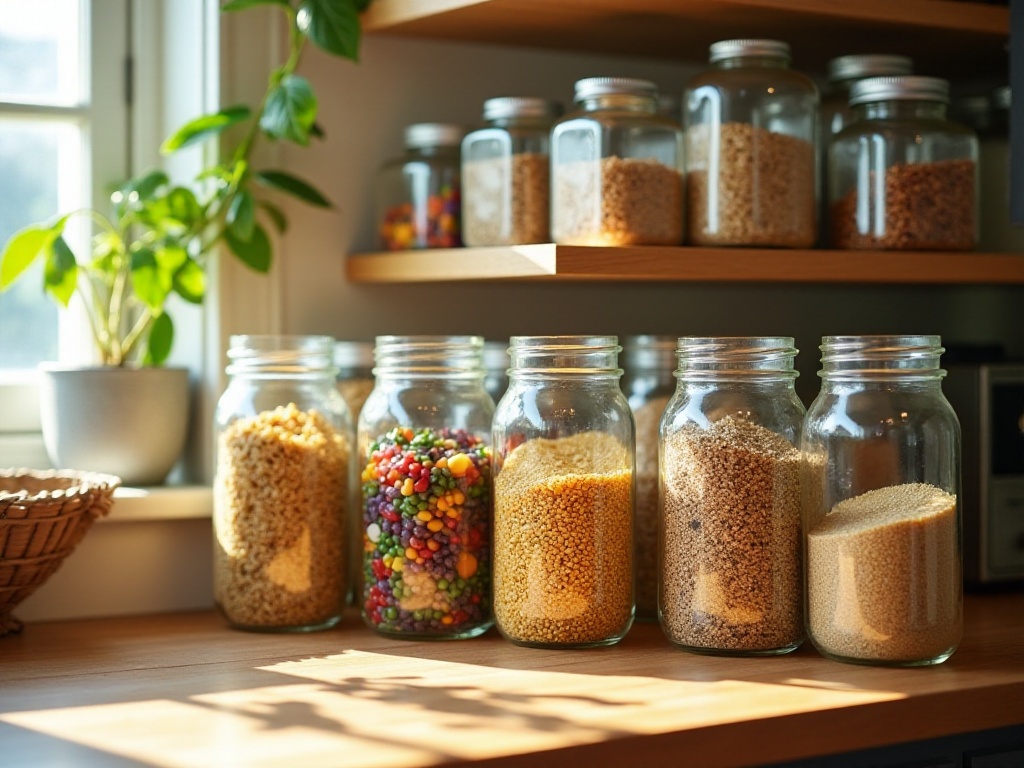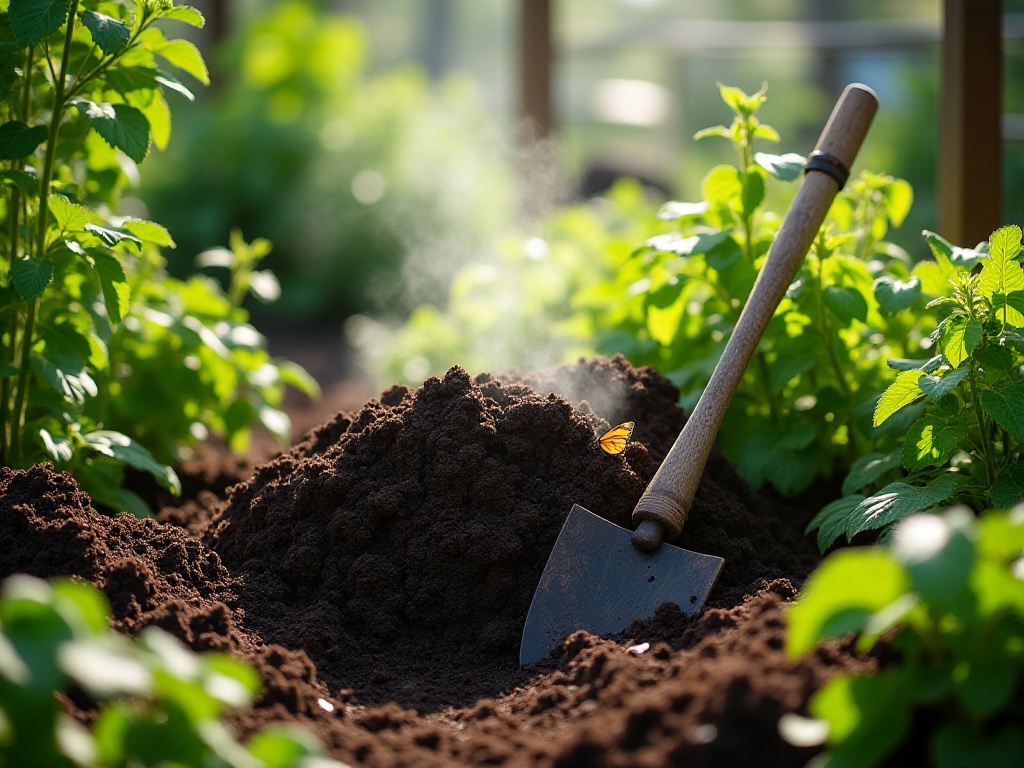The Triggering Moment
One weekend in early 2024, while lounging on the couch scrolling through my phone, I was startled by an odd smell from the kitchen. Following the scent, I discovered that the trash bin was full again, almost overflowing. This 60-liter bin had been filled in just three short days with various packaging boxes, takeout containers, snack bags, and leftover food.
Looking at this overflowing trash bin, I suddenly felt extremely guilty. I would often like and share environmental articles on social media and frequently lecture my roommate about saving water and electricity, yet here I was, a "high-yield producer" of garbage. Standing in front of the trash bin, I began to seriously consider: Is this really the lifestyle I want?
I took out my phone and started searching "how to reduce household waste," and article after article made me realize there was another possibility—zero-waste living. Though it seemed challenging, someone had to take the first step, and why couldn't that person be me?
Trash Audit
After making up my mind, I took immediate action. First, I needed to understand exactly what kind of waste I was producing, so I began a week-long "trash audit" plan. I recorded everything I threw away in my phone's notes and took photos for documentation, wanting to understand the sources and necessity of this waste.
The results of this week's record shocked me. Plastic packaging accounted for 40% of the total waste, including numerous takeout containers, snack packaging, and household item packaging. Food waste made up 25%, not because I was extravagant, but often because food spoiled due to overbuying or overestimating portion sizes when ordering takeout. Disposable items accounted for 20%, including various takeout drink cups, disposable chopsticks, and wet wipes. The remaining 15% was miscellaneous items like courier packaging and waste paper.
Even more shocking was that after careful analysis of this waste, I found that 80% of it could be reduced through habit changes. For instance, food waste could be completely avoided through proper shopping and timely consumption; takeout-generated waste could be reduced by cooking at home; and disposable items all had reusable alternatives.
This discovery both depressed me—realizing how environmentally unfriendly my previous lifestyle was—and gave me hope—change was entirely possible.

Making a Plan
Faced with these alarming statistics, I didn't rashly set an unrealistic goal like "going zero waste starting tomorrow." After careful consideration, I set myself a relatively moderate but challenging goal: to reduce my waste by 50% within a year.
To achieve this goal, I decided to adopt a gradual change strategy. I would start with the easiest habits to change, and once these small changes became natural daily routines, I would attempt more challenging changes.
Take my coffee habit as an example: I would buy a takeout Americano every morning before work, amounting to 365 disposable coffee cups a year. If I could switch to carrying a thermos, I could not only reduce this waste but also save quite a bit of money. Many coffee shops support bringing your own cup and even offer discounts.
Besides coffee cups, I listed a series of easily achievable changes: using a reusable water bottle instead of bottled water, using reusable shopping bags instead of plastic bags, bringing lunch boxes instead of ordering takeout, etc. These small changes might seem insignificant, but they add up to impressive numbers over a year.

Shopping Revolution
During the implementation of my plan, I found that changing shopping habits was the most challenging part. Previously, when shopping at supermarkets, I would grab whatever came to mind, often filling my cart with over-packaged goods. Now I began carefully preparing for each shopping trip, not only making shopping lists in advance but also preparing various containers.
I still vividly remember the first time I brought glass jars to the supermarket to buy rice. When I handed the glass jar to the cashier, she showed a confused and surprised expression, clearly encountering such a customer for the first time. When I explained it was to reduce plastic packaging, she was surprisingly supportive and even actively introduced this eco-friendly shopping method to other customers in line.
That experience greatly encouraged me. I began exploring more package-free shopping opportunities and discovered many supermarkets had bulk sections where I could use my own containers to buy various dry goods, seasonings, and nuts. Some traditional grocery stores also supported this shopping method. Through continuous trial and exploration, the plastic packaging in my kitchen decreased by 70% within three months.
To avoid impulse purchases, I developed the habit of planning the next week's menu every weekend. This not only made my shopping more targeted but also ensured all ingredients were fully utilized. I would design menus based on what was in the refrigerator and seasonal ingredients, making it both environmentally friendly and economical.
For daily necessities, I began looking for alternatives. For example, using cloth handkerchiefs instead of paper tissues, reusable cotton pads instead of disposable ones, and choosing solid shampoo bars instead of bottled shampoo. These changes did require an adjustment period at first, but gradually I discovered that these reusable products were not only more environmentally friendly but often of better quality.

Composting Experiment
During the trash audit, I noticed that kitchen waste accounted for a significant proportion. Although our community had waste sorting, I felt it was a waste to see these food scraps that could become fertilizer being processed uniformly. So I started a composting experiment on my balcony.
At first, I was completely inexperienced, just buying a composting bin online and throwing in all kinds of kitchen waste. Within a few days, the entire balcony was filled with an unpleasant sour smell and attracted lots of fruit flies. My roommate almost had a falling out with me, saying I had turned our home into a garbage dump.
But I didn't give up, and instead began seriously studying composting principles. It turned out that composting needs to maintain a carbon-nitrogen balance, and couldn't just contain kitchen waste—it also needed dry carbon sources like dead leaves and shredded paper. Through continuous adjustment of material ratios and moisture control, my composting system finally got on track, processing about 15 kg of kitchen waste monthly.
Watching this kitchen waste gradually transform into dark brown organic fertilizer through microbial action gives me a great sense of achievement. I use this fertilizer for growing flowers and vegetables, and my small balcony garden is thriving. I often harvest some of my own herbs and vegetables.

Unexpected Gains
After practicing zero-waste living for a while, I discovered that this lifestyle brought far more benefits than just environmental ones. First were the economic benefits—I could save about 500 yuan monthly by reducing many unnecessary purchases. For instance, no longer buying disposable items, reducing takeout frequency, and shopping more strategically all saved me considerable money.
More importantly, this lifestyle made my life more fulfilling and meaningful. I began learning to cook, not only making delicious dishes but also controlling ingredient portions to avoid waste. On weekends, I would go to farmers' markets with friends to shop and exchange eco-friendly tips. This fulfilling life made me feel much happier than my previous routine of scrolling through my phone and binge-watching shows.
Through this lifestyle, I also met many like-minded friends. We often share our zero-waste living experiences on social media, encouraging each other and growing together. Sometimes we organize exchange events, giving items we no longer need but are still usable to people who need them, being both environmentally friendly and helping others.

Real-World Challenges
Of course, I encountered many difficulties in practicing zero-waste living. The biggest challenge is that it's often not easy to buy package-free products. For example, in some small supermarkets, the bulk section options are limited, and some necessities can only be bought in packaging.
I also frequently encounter awkward situations when dining out. Once, I brought my own container to a restaurant for takeout, and the server showed a troubled expression, saying store policy required using their packaging. Similar situations happen occasionally, making me realize that zero-waste living still faces many limitations in the current consumer environment.
Maintaining a zero-waste lifestyle is also challenging when work is busy. Sometimes when working late, I really don't have the energy to cook and can only order takeout. Or when traveling for business, it's hard to find shopping venues that align with zero-waste principles. At these times, I remind myself that what's important isn't pursuing perfect zero waste, but reducing waste as much as possible when conditions allow.
Another practical issue is that many zero-waste alternatives require relatively large initial investments. For example, reusable cotton pads, quality glass storage jars, and composting equipment all require certain financial investments. Although these investments are worthwhile in the long run, people with limited budgets may need to make the switch gradually.

Future Outlook
After a year of effort, my waste volume has indeed decreased by nearly 60%, exceeding my initial goal of 50%. This achievement greatly encourages me, but I know it's just the beginning. Next, I plan to try more waste reduction solutions.
First, I want to try making some daily necessities myself. For example, cleaners and skincare products—this would not only reduce packaging waste but also ensure the safety of ingredients used. I've already collected some recipes online and plan to try them on weekends.
Second, I want to promote zero-waste concepts at the community level. I plan to establish an item-sharing platform with neighbors in my complex, sharing tools, books, and other necessary but infrequently used items. This would both reduce duplicate purchases and promote neighborly relationships.
I also plan to organize community environmental lectures and workshops to share my zero-waste living experiences and teach practical waste reduction skills, such as how to compost and make eco-friendly cleaners. I believe only when more people join this movement can we truly change the current situation.
At work, I've also begun spreading environmental concepts among colleagues. For example, advocating for reusable utensils and setting up recycling bins in the office. I'm gratified that several colleagues have started following my example, bringing thermal cups and lunch boxes to work.
Looking to the future, I hope to see more businesses supporting zero-waste shopping and more people joining the waste reduction movement. Although change won't happen overnight, as long as everyone starts with small actions around them, we can definitely make our living environment better.
If you also want to start zero-waste living, why not begin by recording your waste? This process might give you new insights into your consumption habits and help you discover many areas for improvement. Remember, every small change is meaningful—what's important is taking action. I believe you'll also gain as much as I have from this process.


